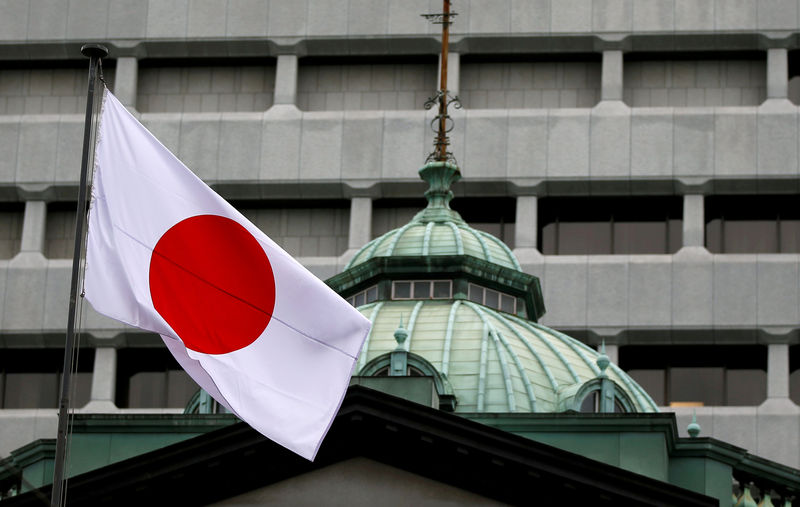 © Reuters. FILE PHOTO: A Japanese flag flutters atop the Bank of Japan building in Tokyo
© Reuters. FILE PHOTO: A Japanese flag flutters atop the Bank of Japan building in TokyoBy Leika Kihara
TOKYO (Reuters) – The Bank of Japan is set to keep monetary policy steady next week and debate how escalating global trade frictions could undermine its confidence that the export-reliant economy will sustain a moderate expansion thanks to robust world demand.
The central bank’s nine-member board will also likely scrutinize market moves since its decision in July to allow bond yields to move more flexibly around its zero percent target.
Despite Governor Haruhiko Kuroda’s assurance the BOJ will allow 10-year bond yields to rise to around 0.2 percent, they have been caught in a tight range around 0.1 percent in a sign of the difficulty of reviving a market that has seen liquidity dry up from the central bank’s huge purchases.
“The July move didn’t address the fundamental problems of the BOJ’s policy, such as the damage of low rates on the banking sector,” said Izuru Kato, chief economist at Totan Research.
“Long-term yields need to rise more to ease strains on the banking sector.”
At a two-day rate review ending on Sept. 19, the BOJ is expected to maintain its short-term interest rate target at minus 0.1 percent and a pledge to guide long-term rates around zero percent.
It is also likely to reiterate a pledge, adopted in July, to keep rates very low for an extended period so a steady economic recovery helps to push up inflation to its elusive 2 percent target.
One worry for policy-makers is the potential economic fallout from the intensifying trade spat between the United States and China, and the subject may be taken up for debate by BOJ policymakers.
“There’s a risk prolonged uncertainty over the trade spat could hurt corporate sentiment and capital expenditure,” said a source familiar with the BOJ’s thinking.
With inflation remaining distant from its 2 percent target, the BOJ took steps in July to make its policy framework more sustainable, such as allowing yields to move more flexibly.
Markets are focusing on Kuroda’s post-meeting briefing for his views on why bond yields have remained stagnant since the July decision, and clues on whether the bank could act again to boost trading.
Many in the BOJ blame lackluster bond price moves on a summer holiday-season lull and prefer to spend more time gauging the impact of its July decision.
Still, the recent market moves underscore the difficulty of chasing two goals – sticking to a policy that aims to cap bond yields while attempting to boost trading activity.
Kuroda has said the BOJ would allow yields to move at double the previous range of around minus 0.1 percent to 0.1 percent.
In the event yield moves fail to gain traction, one idea could be to widen the band further. But many central bank policymakers are wary of doing so, as it could undermine the credibility of their pledge to keep long-term rates around zero percent.
“Volatility heightens only when investors believe interest rates will rise ahead,” Kato of Totan Research said. “You won’t get volatility if you pledge to keep rates low for a long time. The two goals are contradictory.”
Fusion Media or anyone involved with Fusion Media will not accept any liability for loss or damage as a result of reliance on the information including data, quotes, charts and buy/sell signals contained within this website. Please be fully informed regarding the risks and costs associated with trading the financial markets, it is one of the riskiest investment forms possible.
Source: Investing.com





























